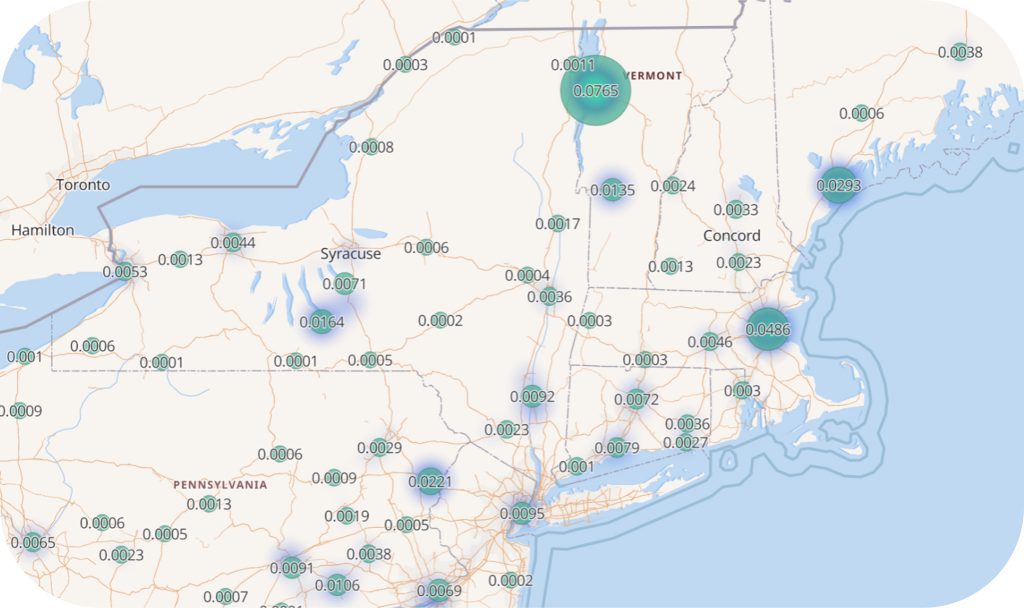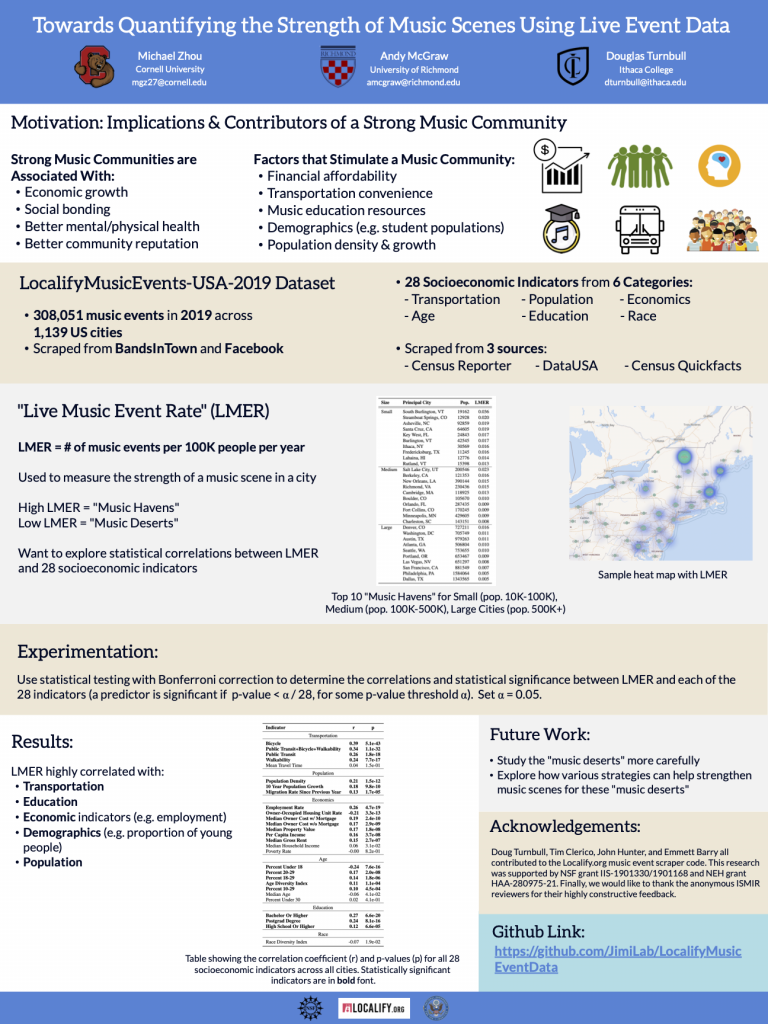Almost all of my research has focused on technical topics such as digital signal processing, machine learning, and recommendation algorithms. But this year, for the annual International Society for Music Information Retrieval (ISMIR) conference, I have veered into the space of computational musicology as I have become more interested in how live music scenes can benefit the broader community.
For the past three years, I have been working with my students on our Localify.org project. The goal of this project is to create an app that helps people discover local artists and find live music events at small venues. The hope is that Localify will help strengthen local music scenes which, in turn, provides both social and economic benefits to the community at large. As a by-product of this work, we collected a database with over 2.1 million live music events.
Based on this work, I got hooked up with a team of musicologists from around the country who were working on a National Endowment for the Humanities (NEH) grant entitled “America’s Music Scenes in the Age of Social Media“. I learned about a ton of cool projects at the intersection of geographical information processing (GIS), musicology, and sociology.
Through this grant, I started working with a musicologist named Andy McGraw from the University of Richmond on the Localify Music Event dataset. In particular, there have been a number of studies on ways in which having a strong local music scene can benefit the community at large. Most of these studies explored a single city or small region. We wanted to use a “big data” set of music events to see if these benefits were observable across a large number of cities.
To help us answer this question, we enlisted the help of Michael Zhou from Cornell who had spent a previous summer working with me as an undergraduate research assistant. Michael has had a good deal of work on various data science projects and was looking for an interesting senior project. He took the ball on this project and rolled with it.
The result was our collaborative paper “Towards Quantifying the Strength of Music Scenes Using Live Event Data“. The main takeaway from the paper is that, if we measure the strength of a music scene as the number of live music events rate per capita (LMER), we find that this metric is highly correlated with many positive socio-economic indicators.

The long-term goal of this research is to use LMER to identify “music desert” cities that may have underdeveloped music scenes. The hope is that local governments and non-government organizations can then invest in developing these local music scenes so that they can reap the rewards down the road.
If you are interested in learning more, please check out the paper for details! We have also put out a data set called LocalifyMusicEvents-USA-2019 that includes information about 308,000 live music from 1,139 American cities.
All the best,
Doug

